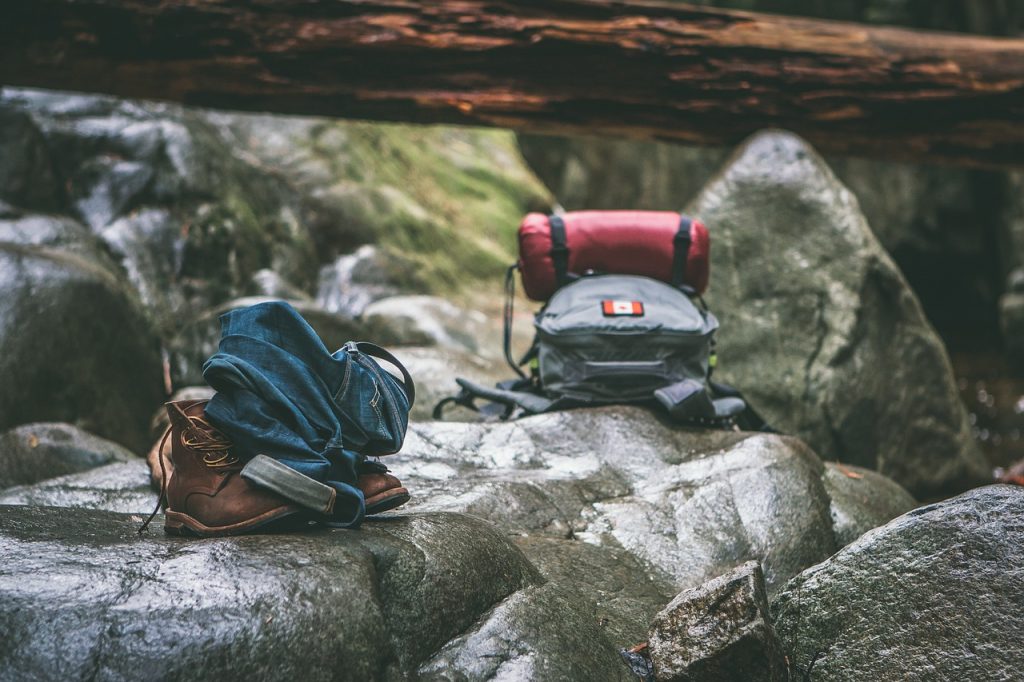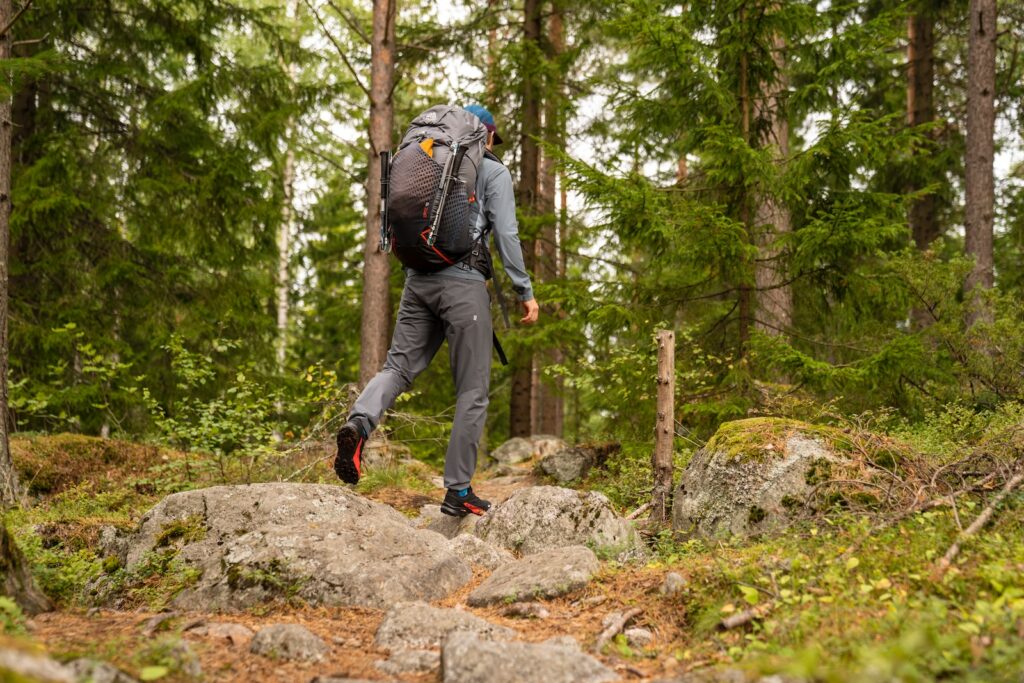 Pawan Yadav on Pexels">
Pawan Yadav on Pexels">
 Pawan Yadav on Pexels">
Pawan Yadav on Pexels">
How to Choose the Perfect Hiking Backpack?
Are you gearing up for an adventure in the great outdoors? A reliable and well-fitted hiking backpack is an absolute must-have for any outdoor enthusiast. But with so many options available, how can you choose the perfect one for your needs?
In this article, we will delve into the essential factors to consider when selecting a hiking backpack that will withstand the test of time and provide you with the comfort and functionality you require. We’ll explore crucial aspects such as capacity, fit, durability, and design, allowing you to make an informed decision that will enhance your outdoor experience.
Whether you’re a novice hiker or a seasoned trekker, finding the right backpack is vital for a successful and enjoyable hiking trip. Don’t let a poorly fitting or flimsy backpack derail your adventure.
So, if you’re ready to embark on your next hiking expedition fully prepared, join us as we guide you through the process of choosing the perfect hiking backpack. Let’s ensure you hit the trails with confidence, comfort, and everything you need right on your back.
- Importance of Choosing the Right Hiking Backpack
- Types of Hiking Backpacks
- Factors to Consider When Choosing a Hiking Backpack
- Sizing and Fit Guide for Hiking Backpacks
- Features to Look for in a Hiking Backpack
- How to Properly Pack a Hiking Backpack?
- Tips for Maintaining and Cleaning Your Hiking Backpack
- Conclusion
Importance of Choosing the Right Hiking Backpack

Choosing the right hiking backpack is crucial to your outdoor experience. A well-suited backpack will not only provide comfort and support but also allow you to carry all the necessary gear and supplies for your trip. On the other hand, a poorly fitting or inadequate backpack can lead to discomfort, pain, and even injuries.
When you’re out on the trails, your backpack becomes your lifeline. It carries your essentials, such as food, water, clothing, and emergency supplies. It also distributes the weight evenly on your back, preventing strain and reducing fatigue. Therefore, investing time and effort into selecting the right hiking backpack is a wise decision.
Types of Hiking Backpacks
Hiking backpacks come in various types, each designed for specific purposes and durations. Understanding the different types will help you narrow down your options and choose the one that best suits your needs.
Daypacks:Daypacks are small-sized backpacks designed for day hikes or short trips. They typically have a capacity of around 20 to 35 liters, providing enough space for essentials like water, snacks, extra layers, and a first aid kit.
Overnight Backpacks: Overnight backpacks, also known as weekend backpacks, are ideal for short overnight trips or weekend getaways. They offer a capacity of around 35 to 50 liters, allowing you to pack a sleeping bag, clothing, cooking gear, and other essentials.
Multi-Day Backpacks:Multi-day backpacks are designed for longer trips, lasting several days or even weeks. These backpacks have a capacity of 50 liters or more and can accommodate everything you need for extended periods in the wilderness, including food, cooking equipment, clothing, and shelter.
Expedition Backpacks: Expedition backpacks are heavy-duty backpacks built for mountaineering, long-distance trekking, or extreme conditions. They have a capacity of 70 liters or more and are designed to carry heavy loads comfortably. These backpacks often have additional features like ice axe loops, crampon attachments, and reinforced frames.
Understanding the different types of hiking backpacks will help you determine which one is most suitable for your specific needs and the duration of your hiking trips.
Factors to Consider When Choosing a Hiking Backpack
Choosing the perfect hiking backpack involves considering various factors that will impact your comfort, convenience, and overall hiking experience. Here are key factors to keep in mind:
1. Capacity
The capacity of a hiking backpack refers to its volume and the amount of gear it can hold. It’s essential to choose a backpack with the right capacity for your specific needs. Consider the duration of your trips and the amount of gear you typically carry. A day hike will require a smaller capacity than a multi-day trek.
2. Fit and Suspension
The fit and suspension system of a backpack play a significant role in your comfort and overall experience. Look for backpacks that offer adjustable straps, padded hip belts, and shoulder straps. A well-fitted backpack will distribute the weight evenly and prevent strain on your back and shoulders.
3. Weight
The weight of a hiking backpack is an important consideration, especially if you plan on covering long distances or tackling challenging terrains. Lightweight backpacks are generally more comfortable and easier to maneuver, but they may sacrifice durability and carrying capacity. Strike a balance between weight and functionality based on your hiking style and preferences.
4. Durability
Durability is essential when it comes to hiking backpacks. You want a backpack that can withstand the rigors of the trail, including rough terrains, harsh weather conditions, and frequent use. Look for backpacks made from high-quality materials, reinforced stitching, and durable zippers to ensure longevity.
5. Design and Organization
Consider the design and organization features of a backpack to ensure it meets your specific requirements. Look for features like multiple compartments, external pockets, attachment points for gear, hydration bladder compatibility, and easy-access zippers. These features can enhance your convenience and access to essentials while on the trail.
By considering these factors, you can narrow down your choices and find a hiking backpack that aligns with your needs and preferences.
Sizing and Fit Guide for Hiking Backpacks

A properly fitting backpack is essential for your comfort and overall hiking experience. Here’s a guide to help you find the right size and fit:
Torso Length:Measure your torso length from the base of your neck to the top of your hips. Look for backpacks that offer adjustable torso lengths or sizes to ensure a proper fit.
Hip Size: Measure your hip circumference at the widest point. The hip belt should sit comfortably on your hips, transferring the weight of the backpack to your legs.
Shoulder Width:Consider your shoulder width when choosing a backpack. The shoulder straps should sit comfortably without digging into your shoulders or restricting your movement.
Load Distribution: Once you have the backpack on, adjust the shoulder straps, hip belt, and sternum strap to distribute the weight evenly. The majority of the weight should be carried on your hips rather than your shoulders.
Remember, every individual is unique, and what works for someone else may not work for you. Take the time to try on different backpacks and adjust the straps to find the perfect fit.
Features to Look for in a Hiking Backpack
When selecting a hiking backpack, there are several features worth considering to enhance your outdoor experience:
Water Resistance: Look for backpacks made from water-resistant materials or those that come with a rain cover. This will help protect your gear from rain or accidental spills.
Ventilation: Backpacks with a ventilation system, such as mesh back panels or suspended mesh frames, allow air to circulate, reducing sweat and providing better comfort during long hikes.
Compression Straps: Compression straps help secure the load and prevent it from shifting during your hike. They also allow you to adjust the size of the backpack based on your load.
Access Points: Consider backpacks with multiple access points, such as top-loading, front-loading, or side zippers. This makes it easier to access specific items without having to unpack everything.
Hydration Compatibility: Look for backpacks that are hydration bladder compatible, with built-in hydration sleeves and tube routing. Staying hydrated on the trail is essential, and having easy access to water can make a significant difference.
Attachment Points: If you plan on carrying additional gear, look for backpacks with attachment points, such as loops, daisy chains, or gear loops. These allow you to secure items like trekking poles, ice axes, or sleeping pads externally.
Considering these features will help you find a hiking backpack that aligns with your specific needs and enhances your overall experience on the trail.
How to Properly Pack a Hiking Backpack?
Properly packing your hiking backpack is crucial for weight distribution, accessibility, and overall comfort. Here are some tips to help you pack efficiently:
Pack Heavy Items Close to Your Back: Place heavier items, such as a sleeping bag or cooking gear, close to your back. This helps maintain balance and prevents the weight from pulling you backward.
Use Compression Straps: Utilize compression straps to secure and compress your load. This prevents items from shifting and helps maintain stability.
Keep Frequently Used Items Accessible: Pack frequently used items, like snacks, a map, or a rain jacket, in external pockets or the top compartment for easy access during your hike.
Organize by Weight:Distribute the weight evenly throughout your backpack. Avoid having heavy items on one side, as it can cause discomfort and imbalance during your hike.
Utilize Internal Compartments: Take advantage of the internal compartments and pockets in your backpack to keep your gear organized and easily accessible.
By following these packing tips, you can ensure a well-balanced and organized backpack that enhances your hiking experience.
Tips for Maintaining and Cleaning Your Hiking Backpack

To prolong the lifespan of your hiking backpack and ensure its optimal performance, it’s essential to maintain and clean it regularly. Here are some tips to help you keep your backpack in top condition:
Regularly Inspect for Damage:Check your backpack for any signs of wear and tear, such as frayed straps or loose stitching. Address any issues promptly to prevent further damage.
Clean After Each Trip: After each hiking trip, clean your backpack to remove dirt, dust, and sweat. Use a mild detergent, warm water, and a soft brush or sponge to clean the exterior. Rinse thoroughly and air dry.
Avoid Machine Washing: Unless specifically stated by the manufacturer, avoid machine washing your backpack. The agitation of the machine can damage the materials and affect the backpack’s performance.
Store Properly:When not in use, store your backpack in a cool, dry place away from direct sunlight. Avoid storing it in a compressed state, as this can damage the padding and suspension system.
Treat Stains Promptly: If you encounter stains on your backpack, treat them promptly to prevent them from setting. Follow the manufacturer’s instructions for stain removal or seek professional advice if needed.
Taking proper care of your hiking backpack will ensure its longevity and reliability throughout your outdoor adventures.
Conclusion
Choosing the perfect hiking backpack is a crucial step in planning your outdoor adventures. By considering factors such as capacity, fit, durability, and design, you can find a backpack that meets your specific needs and enhances your hiking experience.
Remember to take the time to try on different backpacks and adjust the straps for a proper fit. Consider the features that will enhance your convenience and accessibility on the trail, and choose a reputable brand known for quality and performance.
Once you have your hiking backpack, learn how to properly pack and maintain it to ensure its longevity and reliability. With the right backpack and care, you can embark on your hiking trips with confidence, comfort, and everything you need right on your back. So, gear up and hit the trails, knowing you’ve made the perfect choice!





